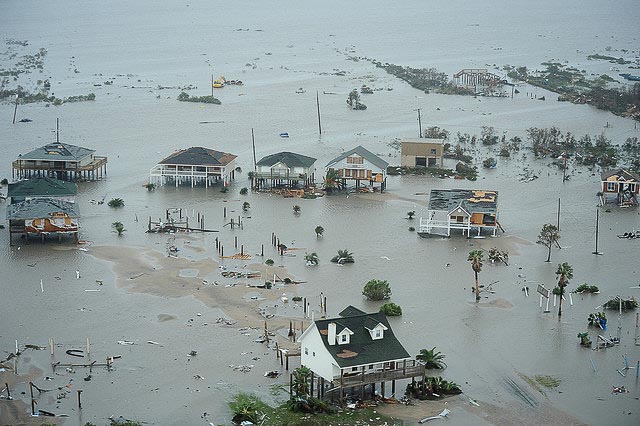Research Over Coffee is a new series in which we unearth the work of area researchers and explain it succinctly in everyday terms. It’s world-class research that you’ll enjoy reading over a cup of coffee.
In 2005, Texans learned that Hurricane Rita was approaching their state. Well aware of the damage Hurricane Katrina had done to nearby New Orleans just a few weeks earlier, many vowed not to stick around for the storm. Government leaders encouraged the evacuation. But in some ways, it was just too much. Nearly 3 million Texans fled their homes, prompting 100-mile backups and a hellscape for motorists who ran out of water and gasoline while on the road.
The Question
Researchers wanted to answer three questions about evacuations.
1. Do those who prepare for hurricanes fare the storm better than those who don’t?
2. Are there different ways people prepare that are more effective than others?
3. And does the way someone prepares predict whether they’ll evacuate?
What Previous Research Had Shown
When people prepare for a pending natural disaster, they’re reacting to a complex web of social cues, warnings and the physical threats they can observe, as well as practical constraints that may keep them from responding in certain ways.
In general, people are more likely to prepare for a storm if they are: educated, wealthy, old, female, and Anglo. People who are less educated, poor, young, male and a racial minority are less likely to prepare.
The Study and Findings
The researchers broke down the ways people prepare for hurricanes into two types: preventative (stuff you do long before a hurricane is imminent, like tree trimming or buying additional insurance), and mitigation (stuff you do once a hurricane is imminent, like buying up all the bottled water at Costco).
The researchers expected that people who took the last-minute steps to deal with the consequences of the storm – things like buying supplies in case of power outages – would be more likely to try to ride it out, especially those who lived outside evacuation areas.
On the other hand, they expected the more expensive, long-term steps to deal with storms – things like home renovations – wouldn’t do much to predict whether someone would evacuate.
They tested these ideas with a randomized survey of Houston residents following 2008’s Hurricane Ike. They asked whether respondents had done things like stock up on supplies, trim trees, or make home repairs due to hurricanes.
They also asked residents to describe how risky where they live is, and they asked background questions about respondents’ socio-economic status, how long they lived in the area, previous hurricane experience, how large their social network is – all that stuff.
Lo and behold, their expectations were confirmed. The researchers emphasized the importance of the discovery that people who took last-minute precautions and didn’t live in evacuation areas were less likely to evacuate.
The Implications
Why does that matter? When people in non-evacuation areas try to leave town, they can clog up the roads – putting people who actually do need to evacuate at risk, the researchers said. That’s largely what happened in 2005 with Hurricane Rita.
So if government officials and emergency planners can increase the number of people who take last-minute steps to deal with a storm and who live outside the most dangerous areas, they may be able to make it easier for those who need to evacuate to do so safely.
At the same time, longer-term preventative steps – like home renovations, tree trimming, that sort of thing – weren’t expected to predict whether people would evacuate. And they didn’t.
The study found that people who faced the greatest risks and took those preventative steps, however, were “significantly less likely to experience costly damage and personal harm from approaching storms.”In short, government officials and emergency planners should tailor their messages to the different groups of people and their specific challenges. When people take the right steps for their situation, they get better results.
The Efficacy of Preparing for Natural Disasters | Robert Stein, Department of Political Science at Rice University; Birnur Buzcu-Guven, Houston Advanced Research Center; Leonardo Dueñas-Osorio, Department of Civil and Environmental Engineering at Rice University; Devika Subramanian, Department of Computer Science at Rice University.

